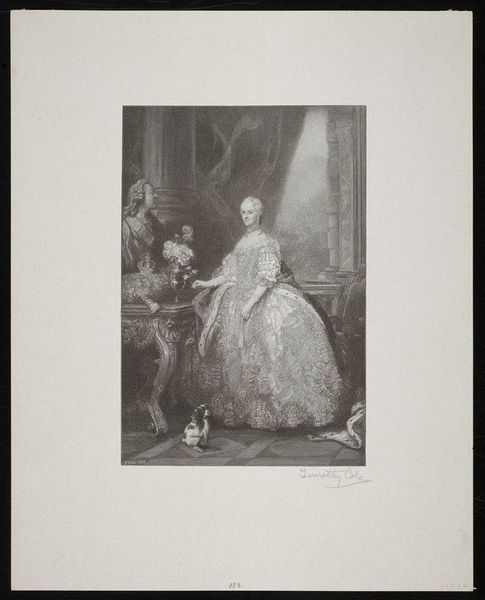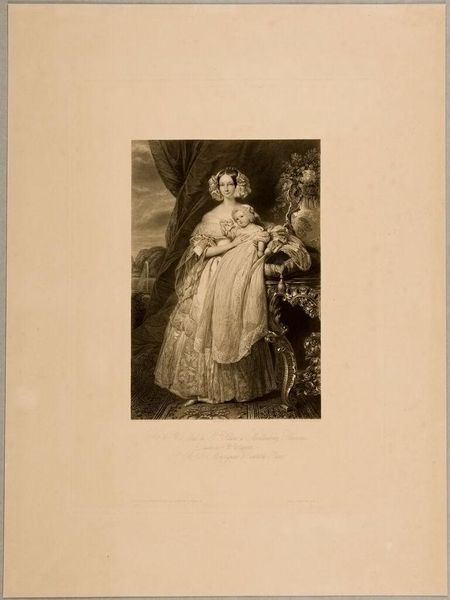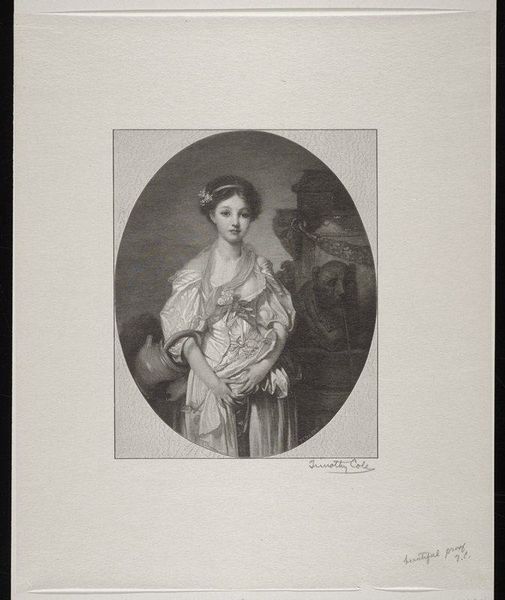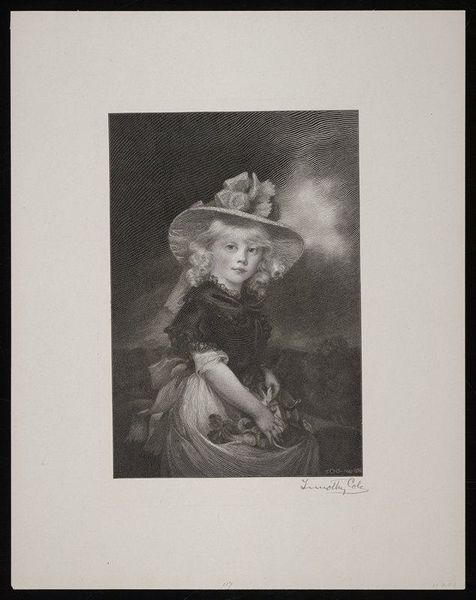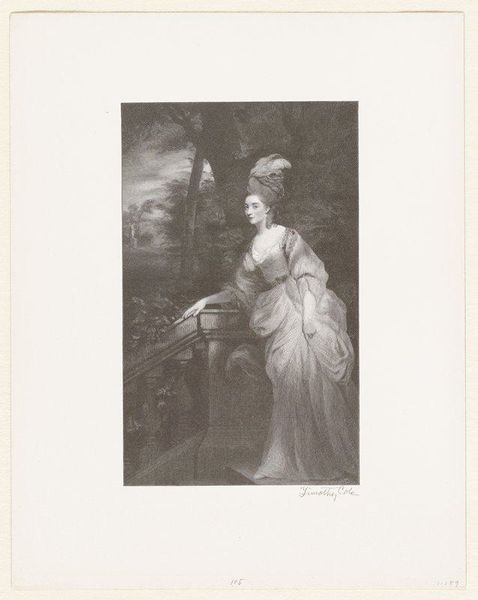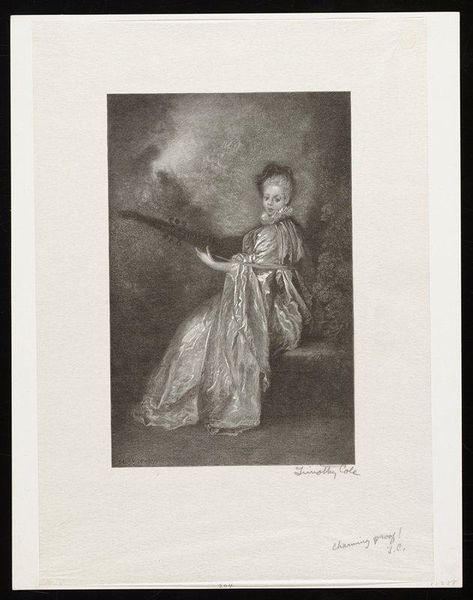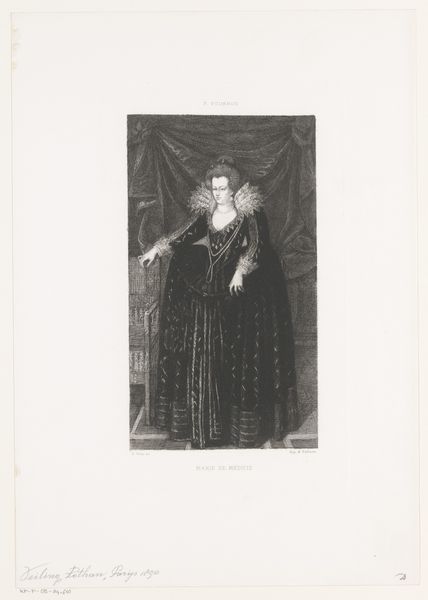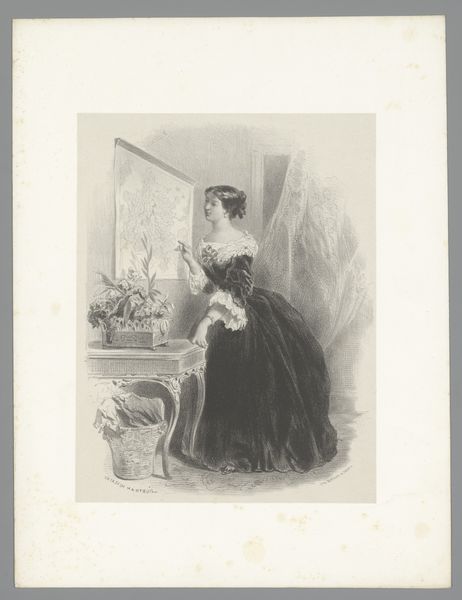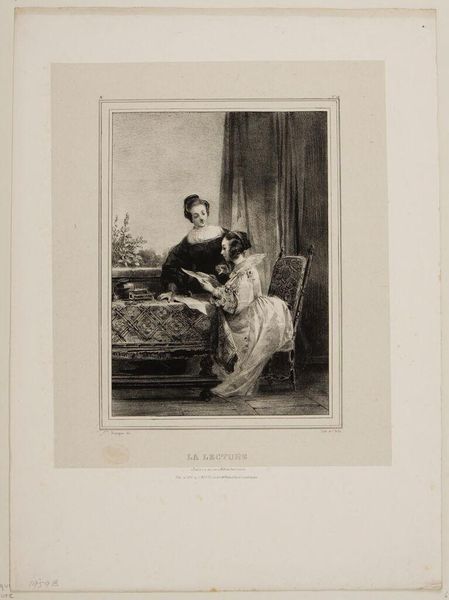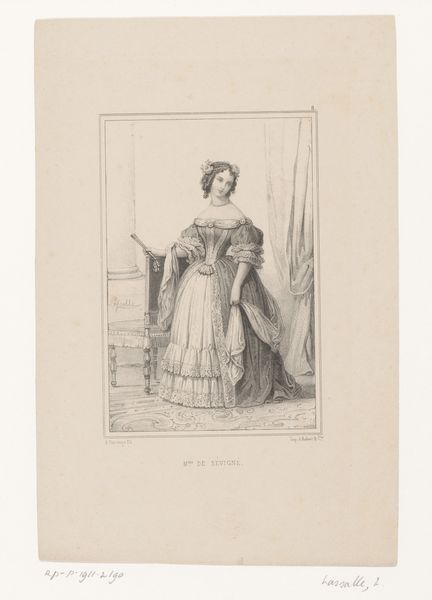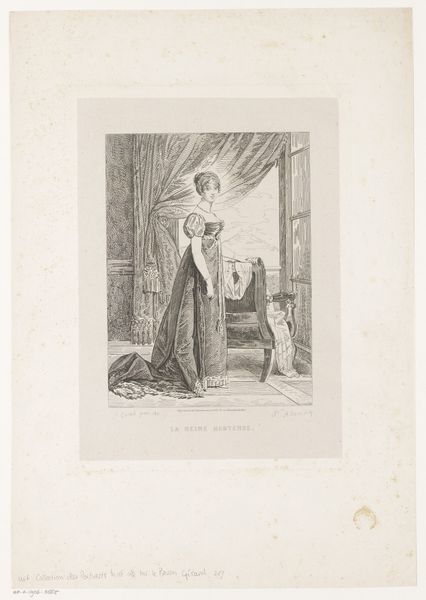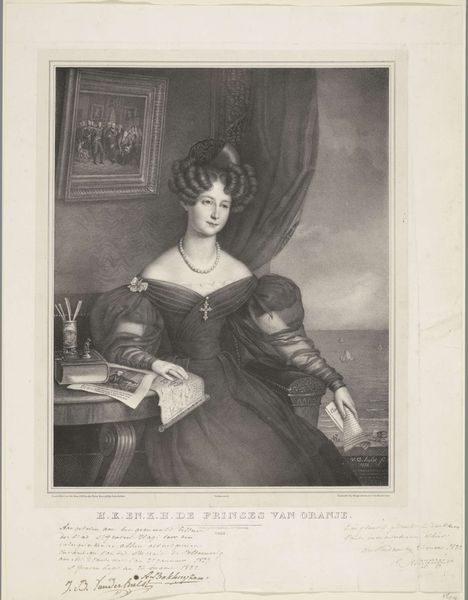
drawing, print, wood-engraving
#
portrait
#
drawing
# print
#
pencil drawing
#
academic-art
#
wood-engraving
Dimensions: 7 7/16 x 5 1/4 in. (18.89 x 13.34 cm) (image)12 x 9 9/16 in. (30.48 x 24.29 cm) (sheet)
Copyright: No Copyright - United States
Curator: Timothy Cole's wood engraving, Marchesa Elena Grimaldi from 1911, at the Minneapolis Institute of Art, offers a captivating portrait of nobility. What are your first thoughts? Editor: Immediately, I’m struck by the palpable sense of privilege. The weight of that sumptuous gown, the parasol held by another person--it all speaks to a very specific social hierarchy and an almost theatrical presentation of identity. Curator: Indeed. Consider the symbology embedded here. The column evokes classical ideals of beauty and status, acting as a deliberate backdrop for the Marchesa. These visual cues were readily understood in the art of the era, signaling cultural continuity. Editor: But the "continuity" reinforces unequal power dynamics. We must also see how representing race functions here. The positioning of the assistant seems to both serve and defer to the Marchesa’s centrality in the image, highlighting labor and perhaps obscuring identity in service of the elite. Curator: I see it less as obscuring and more as carefully balancing a composition, though I understand your reading. Cole masterfully uses the medium of wood engraving to create subtle gradations of light and shadow, contributing to the sense of refined elegance. The details, the texture of her dress, and even the softness of her expression—it all suggests elevated nobility. Editor: Elegance can coexist with exclusion. By carefully controlling the narrative, such images bolstered dominant groups, even if they seem benign to the casual viewer. Who is centered in this "portrait" and who literally occupies the periphery is crucial to explore in relation to the construction of social status. Curator: I can appreciate that vantage point, and perhaps it highlights the timeless question of who gets memorialized. But also note the lasting contribution Cole made in terms of pushing the artistry of engraving and printmaking at this time. There’s an inherent power in what can be transferred, copied, and made repeatable—the proliferation of such an image is in and of itself quite interesting, given our earlier point about dominance. Editor: Yes, there’s a certain democratic potential in reproducibility. Curator: In conclusion, seeing how historical images like this circulate within contemporary debates opens possibilities. Editor: Agreed, the tensions around legacy and representation remain acutely relevant.
Comments
No comments
Be the first to comment and join the conversation on the ultimate creative platform.
